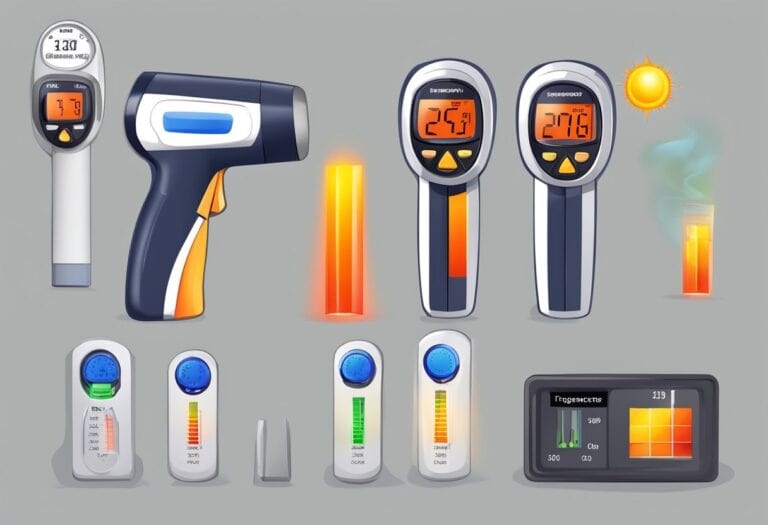Driving in the rain can significantly alter the conditions on the road and the approach one should take to driving.
Wet roads present unique challenges, such as reduced grip and visibility that you must be prepared to handle. It’s prudent to understand the dynamics of wet road conditions to maintain control of your vehicle and ensure your safety. Knowing how to prepare your vehicle for rainfall, from ensuring that your tires have adequate tread to checking that all lights are functional, plays a critical role in safe driving practices.
Equally important is adapting your driving techniques to match the inclement weather. This includes increasing your following distance from the car ahead, utilizing headlights to improve visibility, and being mindful of the potential for hydroplaning.
Safety measures, both proactive and reactive, can mean the difference between a routine drive and a hazardous situation. Situational awareness becomes more crucial as rain can lead to unpredictable events on the road.
Adherence to advice from driving experts and remaining calm under adverse weather conditions can keep you focused and in control.
To ensure safety when driving in the rain, check your vehicle’s tire tread and lights, increase your following distance, use headlights for better visibility, and avoid cruise control to prevent hydroplaning. Adjust to changing conditions for a safer journey.
Preparing Your Vehicle

Before embarking on a rain-soaked journey, ensuring that your vehicle is ready to handle wet conditions is paramount. Proper maintenance and checks can significantly improve safety and visibility during inclement weather.
Tire Maintenance and Tread
Inspect your tires regularly for adequate tread depth, as this is crucial for maintaining traction on wet roads. The legal minimum tread depth is 2/32 inches, but for wet conditions, a depth of at least 4/32 inches is recommended. Consider investing in tires optimized for wet weather to enhance safety.
Windshield Wipers and Defrosters
Check your windshield wipers for signs of wear and replace them if necessary to guarantee clear visibility. Your defroster plays a key role in preventing the windshield from fogging up; verify that it is functioning correctly. It’s advisable to conduct these checks and address any issues before rainy weather is forecasted.
Headlights and Tail Lights
Ensure your headlights and tail lights are both operational and clean, as they are essential for being seen by other drivers during heavy downpours. It’s against the law to drive without functioning lights in low-visibility conditions.
Braking Systems
Regularly review your braking system, including pads, rotors, and fluid, to prevent failure in hazardous weather conditions. Wet roads can significantly increase stopping distances; thus, your brakes must be in top condition to respond effectively when required.
Understanding Wet Road Dynamics
When you drive in the rain, two critical factors dramatically affect your vehicle’s interaction with the road: hydroplaning risks and the conditions of wet pavement leading to slick roads.
Hydroplaning Risks
Hydroplaning occurs when your vehicle’s tires encounter more water on the road surface than they can displace. When this happens, a layer of water builds up between the tires and the road, leading to a loss of traction. You can recognize hydroplaning by a sudden lightness in steering or a loss of control in your vehicle’s direction. Bald tires or worn tread rapidly increase the risk of hydroplaning because they have less grip and cannot effectively channel water away from the tire’s surface.
- To reduce hydroplaning risk:
- Ensure your tires are properly inflated and have adequate tread depth.
- Reduce your speed during heavy rain.
- Avoid standing water on the road.
Wet Pavement and Slick Roads
Wet pavement can be treacherous, making roads slick and reducing friction. The first few minutes after rain begins are the most dangerous because oil residue on the road mixes with water, increasing slipperiness. Your tires need to work harder to grip the road, and stopping distances can double. To maintain control on wet and slick roads:
- Practical tips for driving on wet pavement:
- Brake gently to avoid skidding.
- Keep a safe distance from the vehicle in front of you.
- Turn slowly to maintain control.
Driving in the rain requires your full attention and an understanding of how wet conditions affect road dynamics. Remember to adjust your driving to suit the conditions, and always prioritize safety.
Driving Techniques in Wet Conditions
Adverse weather demands meticulous driving techniques to ensure safety. When navigating wet conditions, certain practices can significantly reduce the risks of accidents.
Speed and Following Distance
In wet weather, the speed at which you drive greatly affects your vehicle’s traction. Adequate visibility is reduced, making it crucial to maintain safe speeds. You should adhere to a following distance that is at least double what you would normally keep in dry conditions, giving you more time to react to traffic and road hazards.
- Safe Speeds: Travel at speeds allowing full control of your car.
- Following Distance: Increase your normal following distance by a factor of two.
Cruise Control Considerations
During wet conditions, using cruise control can be risky. If your car hydroplanes while cruise control is engaged, it could cause your vehicle to accelerate and reduce your reaction time. It is safer to manage your speed manually, especially in a manual transmission, to maintain greater control.
- Disengage Cruise Control: Manually adjust your speed to the road conditions.
Turning and Maneuvering
Extra caution is necessary when turning or changing lanes. Signal earlier than usual to alert other drivers and execute turns with deliberate, smooth actions. Avoid sudden maneuvers; these could lead to loss of traction and vehicle control.
- Lane Changes: Signal early and move gently into the new lane.
- Calm Turning: Approach turns slowly and accelerate gradually out of them.
Handling Skids
Encountering a skid can be alarming, but staying calm is paramount. If your vehicle begins to skid, gently steer in the direction you want the car to go and avoid slamming on the brakes, as this could worsen the skid. Keep a firm grip on the steering wheel and look where you want to go.
- Steering Into Skids: Direct the car calmly into the intended direction.
- Brake Control: Apply brakes softly if necessary, and avoid sudden movements.
By following these techniques, you can improve your chances of driving safely in the rain, ensuring your journey is as secure as possible under these challenging conditions.
Proactive Safety Measures
To ensure your safety while driving in the rain, adopt proactive measures that keep both you and others on the road secure. Effective use of your vehicle’s features and adaptations to changing conditions are crucial.
Using Headlights and Windshield Wipers
As rain begins, immediately turn on your headlights to increase your vehicle’s visibility to other drivers. It’s not just a safety tip; in many places, it’s the law. Simultaneously, activate your windshield wipers to maintain clear vision through your windshield, which is essential for identifying hazards quickly.
Maintaining Visibility
Maintain visibility during heavy rain by keeping your windows clear. Use defogging and ventilation systems to prevent windows from fogging up. Ensure that your windshield wiper fluid is replenished regularly, as dirty or streaky windows can drastically reduce visibility.
- Checklist for Visibility:
- Keep windshield clean and streak-free.
- Ensure wiper fluid is topped up.
- Use defoggers and ventilation to prevent window fogging.
Determining Safe Driving Speeds
Adjust your speed to match the weather conditions; as visibility reduces, slow down to allow more reaction time. Studies suggest developing proactive strategies for safe driving speeds can significantly decrease the risk of accidents. Monitor the flow of traffic and weather advisories to gauge the appropriate speed.
- Tips for Safe Speeds:
- Aim for a speed that allows ample stopping distance.
- Avoid sudden brakes to maintain traction.
- Match your speed with the visibility and rain intensity.
Knowing When to Pull Over
If the rainfall intensifies to the point where driving safely is compromised, do not hesitate to pull over to a safe location. Wait until the heavy downpour subsides or visibility improves. Remember, taking a break can prevent potential accidents when conditions are too challenging for safe driving.
Responding to Adverse Weather Events
When you encounter adverse weather conditions such as heavy rain, it is essential to adjust your driving accordingly to reduce the risk of accidents.
Navigating Through Standing Water
When driving through standing water, it is critical to slow down to prevent skidding. Lowering your speed helps maintain traction and control of your car. Use these strategies:
- Reduce Speed: Aim for a speed that allows you to maintain control without causing water to channel into the engine compartment.
- Follow Tracks: Stick to the tire tracks left by preceding vehicles which may be shallower.
- Check Depth: If you doubt the water’s depth, observe if other vehicles manage to cross safely before proceeding.
Dealing with Flooding Conditions
Flooding presents more severe challenges. If caught in a flood:
- Don’t Ignore Barriers: Never drive past barriers or signs indicating flooding ahead.
- Find an Alternate Route: If possible, turn around and take a different path away from the flooded area.
- Keep Informed: Stay updated on current flood advisories through local radio or a weather app.
Remember that flooded roads can hide hazards such as potholes or debris. If your vehicle begins to skid, steer gently in the direction you want the front of the car to go and avoid sudden braking. DefensiveDriving.org recommends staying calm and focused, which is crucial in maintaining safety during adverse weather driving conditions.
Advice from Experts
When maneuvering on wet pavement, expert recommendations emphasize caution and adjusted driving behaviors to maintain road safety. The Federal Highway Administration (FHWA) provides comprehensive guidelines to enhance safe driving practices during rainfall.
Federal Highway Administration Guidelines
- Maintain Vehicle Condition: Before driving in the rain, ensure your vehicle’s lights, tires, brakes, and windshield wipers are in optimal condition for wet roads.
- Slow Down: Reduce your speed to prevent hydroplaning, as water creates a barrier between the tires and the road surface, leading to loss of traction.
- Increase Following Distance: Extend the distance between your vehicle and the one ahead of you to allow for a longer stopping distance and to avoid hard braking.
- Avoid Sudden Movements: Smooth steering and gradual maneuvers are crucial. Sudden changes can result in skidding.
- Turn On Headlights: Improve your visibility to others by using your headlights, as required by law in many places during precipitation.
- Use windshield wipers effectively: Adjust the speed of your wipers to match the intensity of the rain for clear vision.
- Approach Puddles Cautiously: Driving through standing water can cause hydroplaning or conceal potholes. If unavoidable, traverse at low speed and steady throttle.
- Focus on the Road: Distractions are particularly risky in wet conditions. Keep your attention on driving and anticipate the actions of others.
- Hands on Wheel: Keep both hands firmly on the wheel to maintain control during unexpected situations.
- Plan Your Travel: If possible, schedule driving when rain is not expected. Stay informed about weather conditions before and during your journey.
Abiding by these directives from the Federal Highway Administration will help ensure your safety and the safety of those around you during adverse weather conditions.
Frequently Asked Questions
When navigating roads during rainfall, being informed and prepared is crucial for safety. These FAQs target specific concerns to help you drive safely in the rain.
What are the safety precautions to take when driving in heavy rainfall?
Heavy rainfall significantly reduces visibility and traction. You should slow down, turn on your headlights, maintain a safe distance from the vehicle in front of you, and avoid heavy braking. Using fog lights if your vehicle is equipped with them can also improve visibility.
How does driving at night in the rain affect visibility and what measures can be taken to improve it?
Nighttime rain driving reduces visibility and the glare from oncoming headlights can compound this issue. To improve visibility, keep your windshield clean, ensure your wipers are effective, and reduce your speed. Properly align your headlights and consider using anti-reflective coatings on your eyeglasses if you wear them.
Can driving through rain cause harm to your vehicle, and what preventive steps can be taken?
Prolonged exposure to rain can lead to rust on your vehicle and potential water damage. Ensure good vehicle maintenance, wax your car regularly to create a protective barrier, and check for and seal any leaks. It’s important to examine your car’s undercarriage for accumulated moisture which could lead to rust.
What are the key dangers associated with driving in the rain and how can one mitigate these risks?
The main dangers include reduced visibility, hydroplaning, and longer stopping distances. To mitigate these risks, you should drive with your headlights on, replace your wipers if they’re not clearing the windshield effectively, and avoid sudden turns or stops. Hydroplaning risks can be reduced by driving in the tracks of the car ahead and avoiding puddles.
What steps should be taken to maintain vehicle control during heavy downpours on a highway?
During heavy downpours on highways, reduce your speed to maintain control, and increase your following distance to allow more time to react. Use the center lanes as water tends to pool in outer ones. If steering becomes difficult, ease off the gas and steer straight or slightly into the direction of a skid if it occurs.
What techniques can be employed to ensure maximum safety while driving under rainy conditions?
Focus on smooth driving techniques such as gradual acceleration, gentle braking, and controlled steering. Make sure your tires are properly inflated and have adequate tread depth to combat wet roads. Check the weather forecasts prior to travel and consider postponing your trip if severe weather is expected.



![Best Humidifiers: Top [year] Models for Your Home](https://observationhobbies.com/wp-content/uploads/2024/01/Best-Humidifiers-2024-768x525.png)



